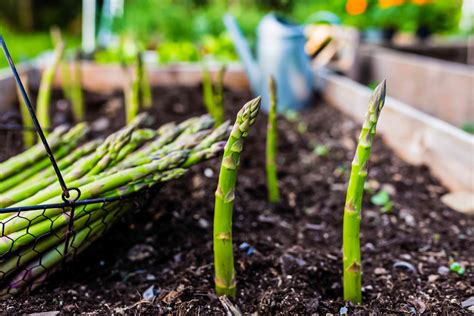How to Plant Asparagus: A Comprehensive Guide for a Bountiful Harvest
Asparagus, with its tender spears and delicate flavor, is a rewarding vegetable to grow. But getting a successful harvest requires understanding the plant's unique needs. This comprehensive guide will walk you through the process of planting asparagus, ensuring you enjoy delicious homegrown spears for years to come.
Choosing the Right Asparagus Crowns
The foundation of a successful asparagus patch lies in selecting high-quality crowns. Asparagus crowns are essentially the roots of the plant, containing the dormant buds that will sprout into spears. Look for:
- Healthy Crowns: Choose crowns that are firm, plump, and free from any signs of disease or damage. Avoid crowns that are shriveled, discolored, or have a foul odor.
- Multiple Buds: Opt for crowns with several visible buds, indicating strong growth potential.
- Reputable Supplier: Purchase your crowns from a trusted nursery or garden center to ensure quality and variety.
Site Selection and Soil Preparation: Key to Success
Asparagus thrives in sunny locations with well-drained soil. Prepare your planting area meticulously:
Sunlight Requirements
Asparagus needs at least six hours of direct sunlight per day. Choose a location that receives ample sunlight throughout the growing season.
Soil Preparation: The Foundation for Growth
Asparagus prefers loose, well-drained soil rich in organic matter. Amend heavy clay soils with compost or other organic materials to improve drainage and aeration. Sandy soils may benefit from the addition of peat moss to improve water retention.
- Soil Testing: A soil test will reveal your soil's pH and nutrient levels, guiding you in making necessary amendments. Asparagus prefers slightly acidic to neutral soil (pH 6.5-7.5).
- Pre-Planting Preparation: Till the soil deeply (12-18 inches) to create a loose, workable bed. Remove any rocks or weeds that could hinder root growth.
Planting Your Asparagus Crowns: A Step-by-Step Guide
Planting asparagus crowns correctly is critical for establishing a strong, productive patch.
-
Dig Trenches: Dig trenches 12-18 inches deep and 12-18 inches wide. The spacing between trenches should be approximately 4 feet to allow for ample growth.
-
Amend the Trenches: Add a generous layer of well-rotted compost or other organic matter to the bottom of the trenches. This will provide essential nutrients for the developing roots.
-
Place the Crowns: Gently place the asparagus crowns in the trenches, spacing them 12-18 inches apart. Ensure the buds are facing upward.
-
Cover with Soil: Cover the crowns with a few inches of soil, firming it gently around the crowns.
-
Water Thoroughly: Water the newly planted crowns thoroughly to settle the soil and promote root establishment.
Post-Planting Care: Nurturing Your Asparagus
After planting, consistent care is essential for a healthy harvest:
- Watering: Keep the soil consistently moist, especially during dry periods.
- Weed Control: Regularly weed the area around the asparagus plants to prevent competition for nutrients and water. Mulching can help suppress weeds.
- Fertilizing: Feed your asparagus plants annually with a balanced fertilizer. A soil test can guide you on the appropriate fertilizer type and amount.
- Pest and Disease Management: Monitor your asparagus plants for pests and diseases. Address any issues promptly to prevent widespread damage.
Harvesting Your Asparagus: Patience Yields Rewards
Patience is key when it comes to harvesting asparagus. Resist the urge to harvest in the first year. Allow the plants to establish a strong root system. Harvesting should begin in the second or third year. Harvest only the spears that are pencil-thick and easily snapped off at the base.
By following these steps, you can successfully plant and cultivate your own bountiful asparagus patch, ensuring delicious homegrown spears for many harvests to come. Remember, proper soil preparation, crown selection, and post-planting care are the keys to a thriving asparagus bed.
